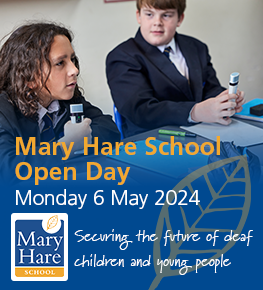6.7. Other hearing technologies
This section is still under development.
The following useful resources have been added in the meantime, which you may find useful.
Other forms of primary technologies not mentioned previously in this section include:
Contralateral routing of sound (CROS) HAs
Contralateral routing of sound (CROS) HAs pick up sound from the side with no hearing and feed it into the hearing ear. This type of hearing aid is for people who have good hearing in their hearing ear.
BiCROS (bi-contralateral routing of sound) HAs amplify sound from both sides and feed it into the ear with better hearing. This HA is for people who have hearing loss in their hearing ear.
For more information on CROS HAs please see: https://www.phonak.com/en-uk/hearing-devices/hearing-aids/cros-paradise
Middle ear implants
A middle ear implant is made up of an external component called the ‘processor’ and an internal component that is surgically implanted. The processor sends sound signals to the internal part of the implant, which includes a receiver located just beneath the skin, to pick up the sound signals from the processor. The implant is attached to one of the bones in the middle ear or near the membrane window of the cochlea. The implant functions by either directly moving the bones of the middle ear or vibrating the membrane window of the cochlea to produce sound.
Middle ear implants amplify sound without the need for an ear mould, making them more comfortable for those who experience ear discomfort or infections. They are ideal for individuals with mild to moderate, mixed or conductive hearing loss, or sensori-neural hearing loss.
The following video by MED-EL provides more information:
Electroacoustic implants
Electroacoustic implants combine CI technology for high-pitched sounds and HA technology for low-pitched sounds. This combined device is indicated for ski-slope types of hearing loss where low-frequency hearing is at the mild to moderate range, and high-frequency hearing is at a severe to profound range. The CI electrode array stimulates the high frequencies within the cochlea’s basal turn, and the HA conveys the low frequencies at the apical turn in the same ear.
For more information on the specific manufacturers electroacoustic implants, please see below:
MED-EL:
https://www.medel.com/en-gb/hearing-solutions/electric-acoustic-stimulation
Cochlear
https://www.cochlear.com/uk/en/home/diagnosis-and-treatment/how-cochlear-solutions-work/hybrid-cochlear-implants/hybrid-cochlear-implants-for-adults
Auditory brainstem implants
If the auditory nerve is not functioning, an auditory brainstem implant (ABI) might be an option to restore some level of hearing. This kind of hearing loss is uncommon and typically caused by a birth defect in the inner ear; or neurofibromatosis type 2 (Nf2), which causes tumours on the auditory nerve. Surgical removal of these tumours can result in auditory nerve damage. The ABI is authorised for use in Nf2 patients who have had their auditory nerve surgically damaged, as well as children born without an acoustic nerve.
The following resources provide more information on ABIs.
https://mft.nhs.uk/mri/services/cochlear-implants/abi/
NDCS:
Our deaf daughter and her ABI: https://youtu.be/KtDc8bYxssw
Our experience of auditory brainstem implant surgery
Previous pages in this section
6.1 Hearing aids
6.2 Bone conduction hearing devices (BCHD)
6.4 Assistive Listening Technology (ALT) – radio aids and proprietary remote microphone systems
Other sections
- Section 1 Anatomy and physiology of the ear
- Section 2 Aetiology and types of deafness
- Section 3 Auditory perception and hearing testing
- Section 4 Acoustics and physics of sound
- Section 5 Listening skills and functional hearing




